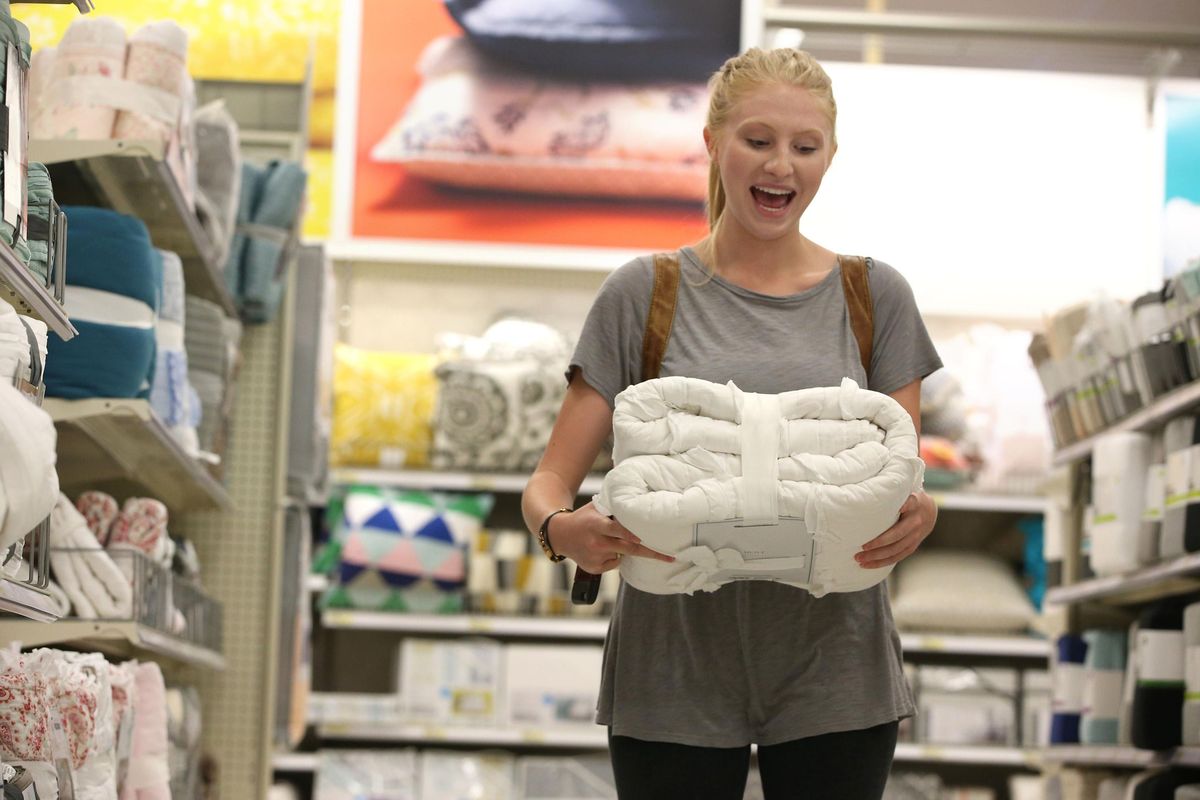How big box stores look to hook college students – for life

CHICAGO – It’s back-to-college season, which means retailers are battling to equip as many of America’s freshmen with laptops, futons and minifridges as they can. In the flood of deals and discounts, some have their eyes on a bigger prize: figuring out how a new generation of customers shops and hooking a group of potential lifelong repeat customers.
The average family with college-age kids plans to spend $888.71 getting ready to go back to campus, about half of which will go for electronics, apparel and dorm furnishings, according to a National Retail Federation survey.
“Especially when it’s freshmen going off to college for the first time, or a sophomore or junior establishing their first apartment, it’s a big chunk of change,” Retail Systems Research analyst Nikki Baird said.
And while those sales are compelling in their own right, companies with more unique or engaging pitches to college students are likely to have an advantage.
Target, Bed Bath & Beyond and Best Buy all let students set up wish lists similar to wedding registries, and Target customers created 136,000 of them last year. Best Buy offers deals that are strictly for students year-round, including a discounted round-the-clock Geek Squad tech support subscription.
At Bed Bath & Beyond, students can make an appointment to shop with a “college expert” or check for a school-specific packing list.
Target promotes its subscriptions, which send customers refills of household staples, to students and parents who at least want to make sure their child regularly restocks on cleaning supplies, even if there’s no guarantee they’ll be used.
This year, Target hired three “college stylists” to create YouTube videos advising students on dorm design. It also introduced a chatbot on the messaging app Kik that can suggest college-oriented products and field questions.
“It’s our first experiment with the platform. It’s a way for us to try and learn, and with what better guests than digitally native college students who are already using these platforms?” Target spokesman Lee Henderson said.
Few if any retailers have cracked the code of how best to engage with the next generation of shoppers online, and back-to-college is an easy time to reach a lot of young customers at once to test new ideas, Baird said.
“It’s a chance to check to see if you engage with consumers at that level; does it work better than throwing promotions at them?” she said.
Target has opened or is planning to open several of its new small-format stores near college campuses. The chain hosts after-hours shopping parties at stores near 86 campuses around the start of the school year, Henderson said. Target buses the students to stores with DJs, free samples and coupons.
Mary Oakes, Columbia’s director of residence life, said Target is the only company that’s asked to host such an event with the college. “The event is popular because the campus doesn’t have a big enough spot for a schoolwide welcome-week party,” Oakes said.
Even though students don’t generally have as much disposable income as older groups, their potential value as lifelong customers makes a small early discount worthwhile, said Alexander Chernev, professor of marketing at Northwestern University’s Kellogg School of Management.
College students also can be easier new customers to draw because most haven’t done much household shopping, he said.
Take Paula Herbst, 18, an incoming freshman at the University of Chicago who finds shopping “kind of tedious.”
“I try to do it as little as possible,” Herbst said.
But Herbst is starting from scratch when it comes to outfitting her dorm room. She had a three-page list of items to buy and will likely need to restock at some point this year.
“It’s good to be the company that helps them shape (their) preferences,” Chernev said.
Amazon.com also has taken a particular interest in students, offering six-month free trials of its Prime membership program, which includes free two-day shipping on many items, after which they pay half the normal rate.
More recently, Amazon has been building on-campus stores where students can pick up and drop off packages.